While all European rivers offer memorable scenery and an alluring array of port stops ranging from big cities to atmospheric villages, they also differ from each other in significant ways.
Here’s a handy guide to help you decide which river cruise is right for you. (Keep in mind that itineraries may vary a bit among the different cruise lines, but Stride can help you sort that out).
1. The Danube – Isn’t It Romantic?
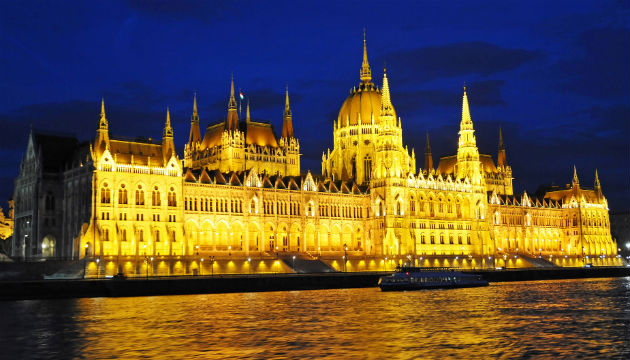
Europe’s second longest river is second to none in romance, scenic beauty and high culture. Most one-week Danube river cruises run between Nuremberg, Germany, and Budapest, Hungary, with stops in Vienna, Austria, and a voyage through Austria’s scenic Wachau Valley along the way. The Wachau Valley features the town of Dȕrnstein – where Richard the Lionhearted was imprisoned during the Crusades – and the nearby town of Melk, home to a restored 11th century Abbey.
Frequently offered side trips include medieval Český Krumlov in the Czech Republic, Bratislava in Slovakia and Salzburg in Austria – with echoes of Strauss, Mozart and the once mighty Habsburg empire resonating throughout.
10 Countries
But the Blue Danube touches 10 countries in all, and you can sail much farther into the heart of Eastern Europe: to Croatia, Serbia, Romania and Bulgaria, before the Danube empties into the Black Sea.
This latter portion of the Danube will take you through the famed Iron Gate, a series of narrow gorges that forms a border between Serbia and Romania. Or combine a Danube cruise with a Rhine River cruise via the Main-Danube canal and sail west all the way to Amsterdam.
2. The Rhine – Castles and Much More
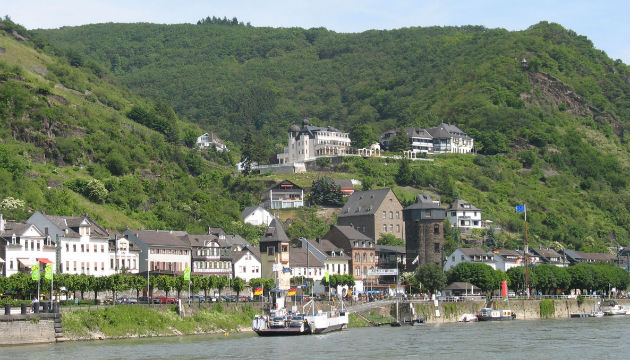
Flowing more than 700 miles from the Swiss Alps to the North Sea, the Rhine River is best known for the unforgettable Rhine Gorge that runs for 40 miles through the heart of Germany. Home to fairy-tale castles, churches, villages, vineyards, and legends – the Lorelei Rock is said to be haunted by a lovelorn maiden whose voice lures sailors to their doom – the gorge may be the most famed stretch in all of European river cruising.
Most Rhine River cruises are one week long and run between Amsterdam and Basel, Switzerland, and -- due to the depth of the river -- can accommodate somewhat larger boats than most other European rivers.
Rhine River Cruise Route Highlights
The German cities of Cologne, with its splendid cathedral; Koblenz, where the Rhine and Moselle rivers join; Heidelberg, the university town replete with medieval architecture; and the Alsatian French city of Strasbourg, where French and German cultures meld, are highlights along the route. You can also combine a Rhine River cruise with a Moselle river cruise in Germany.
Or -- for a two or three-week voyage – connect with the Danube River via the main Danube canal, passing through multiple locks en route, and sail to Budapest or all the way to Romania deep in Eastern Europe.
3. The Seine: Impressionism Laced with History
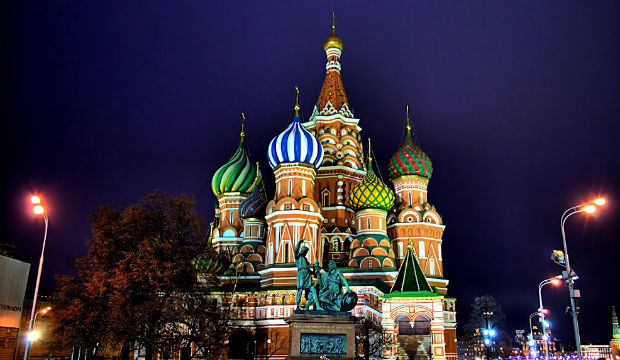
If you’ve been to Paris, you may have taken a Bateaux-Mouches excursion boat ride along the Seine, for waterborne views of the Eiffel Tower, the Louvre, and Notre Dame Cathedral. But week-long Seine River cruises take you far beyond the City of Light, north to Normandy on the English Channel.
On these cruises, geared toward art, architecture and history lovers, you may visit the fabulous Palace of Versailles, where King Louis XVI and Marie Antoinette held court before the French Revolution; Giverny, where Impressionist artist Claude Monet lived and painted for more than 40 years; Chateau-Gaillard, built by English king Richard the Lionhearted in 1196 following the Norman conquest; and the city of Rouen, where Joan of Arc was martyred at the stake.
Normandy Beaches
From Rouen, excursions lead to the beaches at Normandy where allied troops landed in World War II -- or to Honfleur, a port city and favorite subject of the Impressionists -- before returning to Paris. Some river cruise lines offer an additional week on the Saône and Rhône rivers to Provence, after connecting from Paris by bus.
4. Russian River Cruises
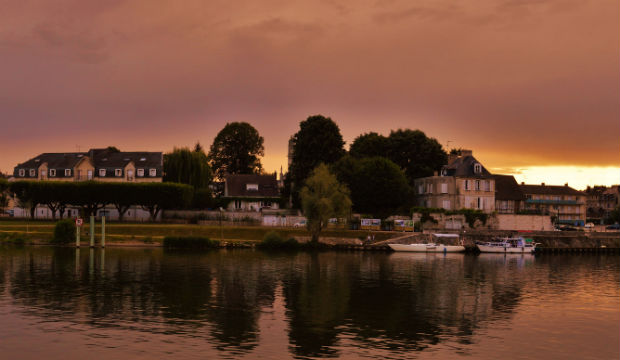
The Volga, Europe’s longest river and a fixture of Russian folklore and song, is just one star of the six-day voyage between Moscow and St. Petersburg, Russia’s two greatest cities. (While cruise itineraries may range up to 11 to 13 days, the extra days will be spent in Moscow and St. Petersburg).
To complete the journey by water, river cruise lines also rely on a number of other waterways, including other rivers, canals and Europe’s two largest lakes.
Moscow Sites
If starting in Moscow, you’ll have plenty of time to visit Red Square (with onion-domed St. Basil Cathedral), the Kremlin and other sights in the Russian capital – using the riverboat as your hotel and restaurant -- before setting off on the Moscow Canal, which leads north to the Volga.
Highlights include exploring some of the ancient Golden Ring cities northeast of Moscow where traditional Russian culture – including often colorfully painted and intricately carved wooden houses -- is on display.
Volga-Baltic Waterway
After sailing the Volga, the Volga-Baltic Waterway, composed of a number of rivers, lakes and canals, then leads to the Baltic Sea over a distance of 230 miles, passing through seven locks. Along the way, you’ll cruise through Lake Onega, the second largest lake in Europe where, on the island of Kizhi, you can view more ancient Russian architecture, including traditional windmills and wooden churches (one -century church was built without hammer or nail).
The Svir River then leads to Europe’s largest lake, Lake Ladoga, and, finally, the Neva River flows into St. Petersburg, where you can tour the Hermitage Museum and the city’s stunning imperial palaces, where the Romanovs reigned until the Russian revolution. You can also reverse the journey, starting in St. Petersburg and ending in Moscow.
5. The Dordogne, Garonne, and Gironde – A Vintage Sojourn Through Bordeaux
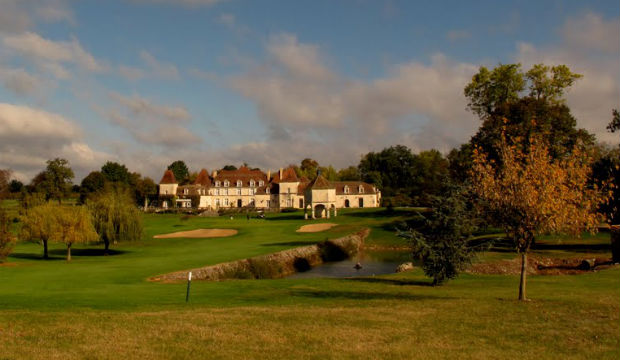
You can get an intimate look at Bordeaux, perhaps the worlds premier red wind producing region, on the this three-river cruise that begins in the city of Bordeaux itself. Bordeaux, situated along the Garonne river — which connects to the Bay of Biscay via the Gironde River along France’s western coast — is a treasure trove of architectural monuments and has been named a UNESCO World Heritage Site.
Once at sail, a short trip northwest on the Garonne and then onto the Gironde River and estuary leads to the town of Pauillac, offering a chance to explore the Medoc region -- known for its premium red wines and the Châteaux Lafite-Rothschild. Another frequent stop is Blaye, also on the Gironde Estuary, which is the site of a UNESCO World Heritage citadel.
Back to Bordeaux
Next, it’s time to head to a third river, the Dordogne, which snakes east into the interior of the country. One excursion option is the medieval city of Saint-Émilion, a World Heritage Site northeast of Bordeaux, known for both its Romanesque churches and its long history of wine production. The cruises then retrace their journey back to Bordeaux with a stop in Cadillac on the Garonne River, where you can tour châteaux and taste the local Sauternes dessert wines.
6. The Douro – It’s All About the Ports
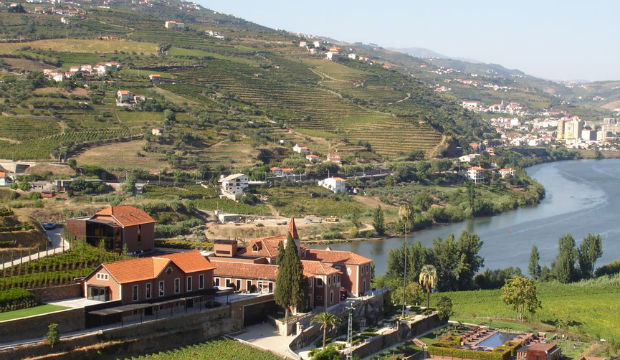
If you have a taste for port wine, or just want to drift past some beautiful countryside and explore small villages that are off the beaten track, cruising through the Douro Valley may be your ticket. The river flows from north central Spain into Portugal and runs to the delightful hillside city of Porto, the cradle of port wine, where it ends at the Atlantic Ocean.
The Douro River cruises themselves are limited to the Portuguese part of the river (though most include a side trip to culturally rich Salamanca, known as Spain’s “golden city”), so you’ll enjoy a slow, leisurely sojourn with plenty of time to sample the local wines and wander through atmospheric towns along the Port Wine Route.
These may include Lamego, site of a pilgrimage church; Pinhao, where you can sip port wines while drinking in panoramic views as well; and Castelo de Rodrigo, a fortified hilltop city with cobblestoned streets and castle ruins. Roundtrip cruises from Porto typically last six to eight days.
7. The Elbe – Resurgent Eastern Europe

Some of Europe’s greatest Eastern European cities -- Berlin, Dresden and Prague – are on vibrant display during an Elbe River cruise. Berlin and Prague, once neglected parts of the Soviet bloc, are now two of the hottest destinations on the planet, while the old section of Dresden, devastated by firebombing during World War II, has been painstakingly rebuilt just as it was before the war.
The Elbe starts in the Czech Republic and ends at Germany’s North Sea, near Hamburg, but the actual week-long cruising segment runs between the towns of Magdeburg, Germany, and Melnik in the Czech Republic.
Historic Towns
Besides Dresden, typical stops include Wittenberg, where Martin Luther lived and, in 1517, nailed his 95 Theses to the door of a local church, igniting the Protestant Reformation that changed Europe forever; the porcelain-producing city of Meissen; and Litomerice, a Czech town dating from the 12th century. Itineraries typically include time in Berlin and Prague at the beginning and end, which can lengthen the entire Elbe journey to ten days.
8. The Göta Canal – Adrift Through Rural Sweden

The Göta Canal is Sweden’s most enduring popular attraction, a wondrous combination of natural beauty and human engineering. Joining with lakes, rivers, the sea and smaller canals to form a continuous waterway across the country, the Göta links the North Sea city of Göteborg in the west with Stockholm on the Baltic, 360 miles to the east.
Completed in 1832, the 115-mile canal section -- known affectionately as “Sweden’s Blue Ribbon” -- includes 65 locks, some of which are still operated by hand.
Ever-Changing Panorama
A full four-to-six day voyage from Göteburg to Stockholm takes you through an ever-changing panorama of the Swedish countryside: fields and farmlands, vast lakes and deserted islands, medieval castles and primeval forests.
The classic cruises are operated by the Göta Canal Steamship Company, whose ships still evoke an era of romantic Continental travel. One, the 1874-vintage M/S Juno, is the world’s oldest registered ship offering overnight accommodation; keep in mind that the ships are narrow to fit in the locks, so cabins are “cozy.”
Villages and Locks
Stops, which vary with the cruise, may include the villages of Trollhätten, home to the Canal Museum; Forsvik, site of the canal’s oldest and highest lock; and Berg, which features one flight of seven locks and two double locks. Other excursions may take you into the medieval towns of Vadstena and Söderköping and the Viking community of Birka, Sweden’s first town.
You’ll also pass through Lakes Vänern and Vättern and spend some time in the Baltic Sea along the Swedish coastline on the way to or from Stockholm (ships travel in both directions between Stockholm and Göteborg). Göta Canal cruises are available primarily from the end of May through August.
9. The Guadalquivir – Under the Spanish Sun
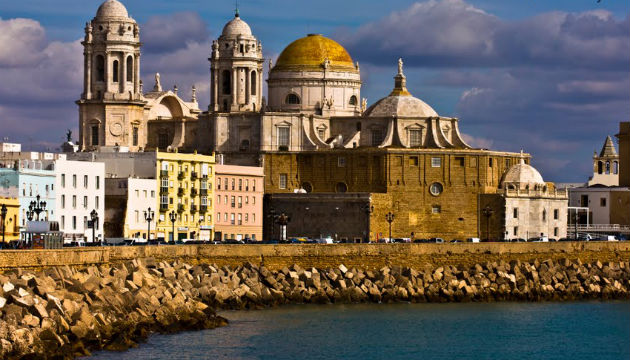
A Guadalquivir cruise offers one of the most pleasant ways to explore Andalusia – Spain’s southernmost province and site of some of the country’s most fabled cities. The river itself, though one of Spain’s longest and most navigable, meanders through a quiet region of mostly undeveloped nature.
But with numerous stops and side trips to cities like Seville, Cadiz, Jerez, Cordoba and Granada – mixed with visits to nature preserves and possible bird-watching outings -- Guadalquivir cruisers will experience a delightful blend of urban and rural pleasures.
Start in Seville
Cruises typically start and end in Seville, a city blessed with remarkably diverse architecture – highlighted by the Moorish Alcázar, a onetime fort turned royal palace -- and sun-kissed vegetation. Cruising west along the Guadalquivir, the cruise boats pass Donana Park, a UNESCO Natural Biosphere Reserve, and reach El Puerto de Santa Maria at the mouth of the river.
Most itineraries then divert south briefly along Cadiz Bay to visit the ancient port of Cadiz, before returning to the river and heading east back toward Seville. Along the way, you can join an excursion to Jerez, known for flamenco, sherry wine, and horses.
Base for Excursions
Back in Seville, cruisers use their boat as a base to take coach excursions to Cordoba – site of the pink-candy-striped Great Mosque, dating from the 10th century Moorish era and so huge that it dwarfs an entire Catholic cathedral located within it -- and Granada, home to the splendid Alhambra, perhaps the world’s finest example of intricate Moorish architecture.
Other excursions may take you to nature preserves or olive oil-producing towns. The entire trip takes about a week. Some Guadalquivir cruises also join up with the Guadiana River on the border between Spain and Portugal, where you can discover mostly untrammeled parts of the Portuguese Algarve.
10. The Moselle – Ancient Romans and Modern Rieslings

Lovers of wine, history, and scenery can all find pleasure along the winding Moselle. The river flows into the Rhine from France and Luxembourg at the German city of Koblenz, and is usually offered as an add-on to a Rhine River cruise. A Moselle cruise presents an opportunity to visit pastoral Luxembourg, a small Grand Duchy that many European travelers overlook.
Other highlights include the German city of Trier, a UNESCO World Heritage Site that harks back to ancient Rome, with a number of monuments dating from that era, as well as Bernkastle, known for its vineyards. A Moselle cruise can add three days or so to a Rhine cruise.
11. The Po – Venice and Other Italian Treasures
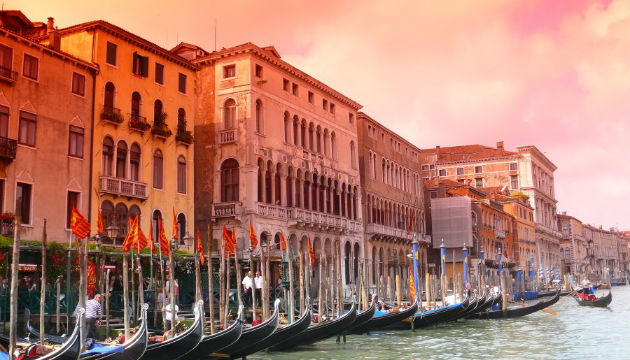
Po River trips begin and end in what many consider to be the world’s most beautiful city: Venice, Italy. From there they wind their way up the Po, which heads west into the interior of the country. Along the way there are chances for excursions to exquisite Italian cities like Padua, Verona, and Ferrara, which many travelers to Venice overlook.
After making your way south from Venice along the Adriatic Sea into the Po Delta, the river portion of the cruise begins at the town of Taglio di Po. From the river, Ferrara, a UNESCO World Heritage site; Verona, the setting for Romeo and Juliet; and Padua, an artistically rich pilgrimage town, require bus rides of varying lengths to reach.
Having cruised the Po and completed the excursions, the five-day voyages then head back toward the Adriatic and return to Venice for a day or two of exploration around the Venice lagoon and the city itself.
12. The Saône and Rhône: Wining and Dining

Like the Rhine, the Rhône rises in Switzerland, but then flows south through France before pouring into the Mediterranean Sea. The Rhône travels through Burgundy, one of France’s richest wine-producing regions, and then sunny Provence, land of lavender, artists, and a Mediterranean aura.
Most cruise itineraries start at the city of Lyon, where the Saône River meets the Rhône, but some start farther north to take in the Saône as well.
A Week on the Water
After a stay in Lyon, widely regarded as France’s gastronomic capital, a week or so on the water is typical. Castles and walled towns like Viviers, straight out of the Middle Ages; the city of Vienne, known for its Roman monuments; and wine centers such as Beaune and Tournon-sur-Rhône await.
Depending on the cruise line, you might conclude your voyage at Arles – immortalized on canvas by Van Gogh -- or Avignon, with its celebrated bridge that spans the Rhône. Note that some cruises take the reverse route, starting in Avignon and finishing in Lyon or Chalon-sur-Saône to the north.
Be sure to check out our Top 10 Tips For Choosing a European River Cruise!
Photo credits: Dennis, Jarvis, Lorelei Rock, Andrew Reid Wildman, on Flickr; Arkaidy, Gerhard Weiss, Jose Manuel Pinto, funtor, Martin Podt, Jesus Miguel Balleros, Antoni F, Alfred Schaffer, astronautilus, all on Panoramio.

